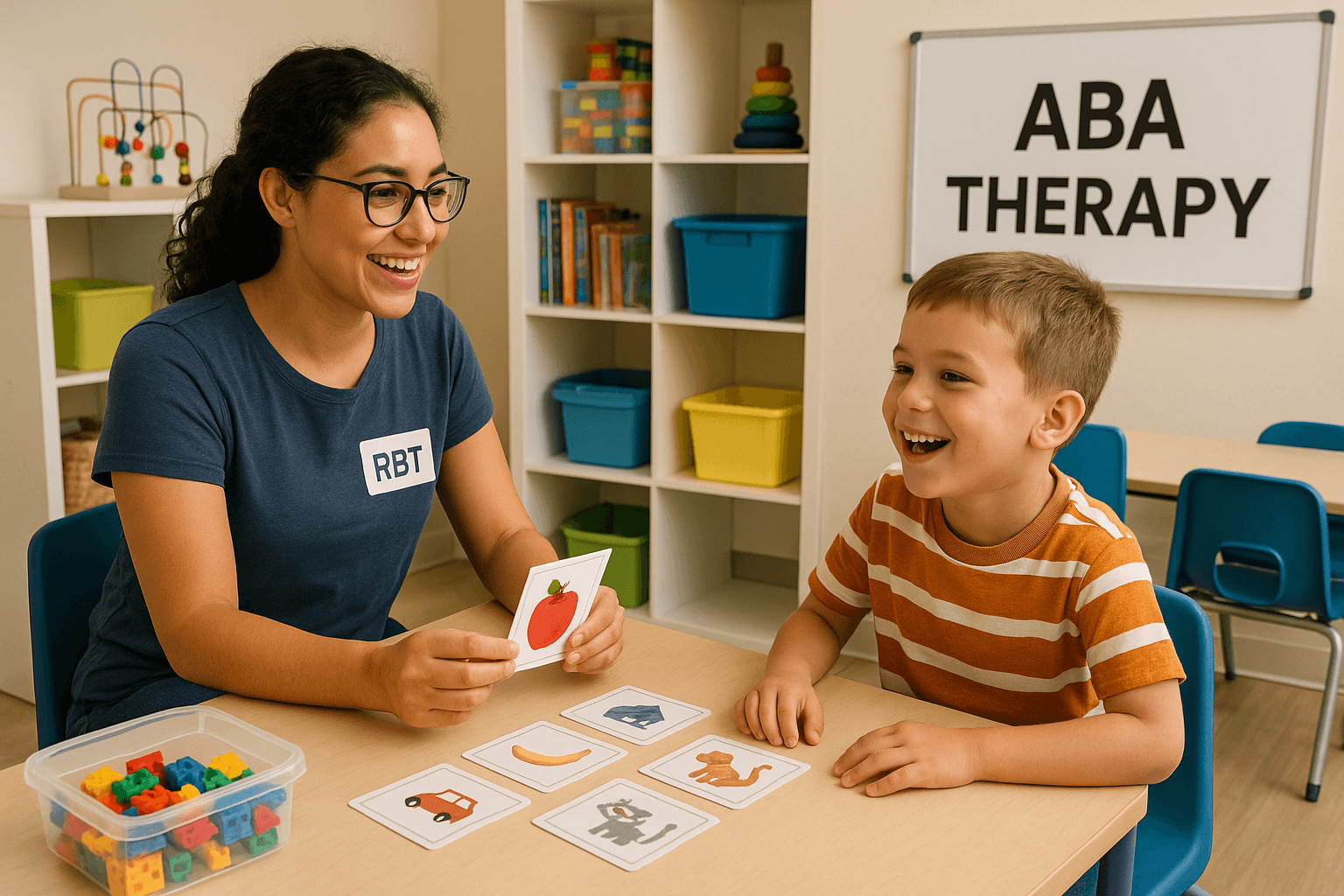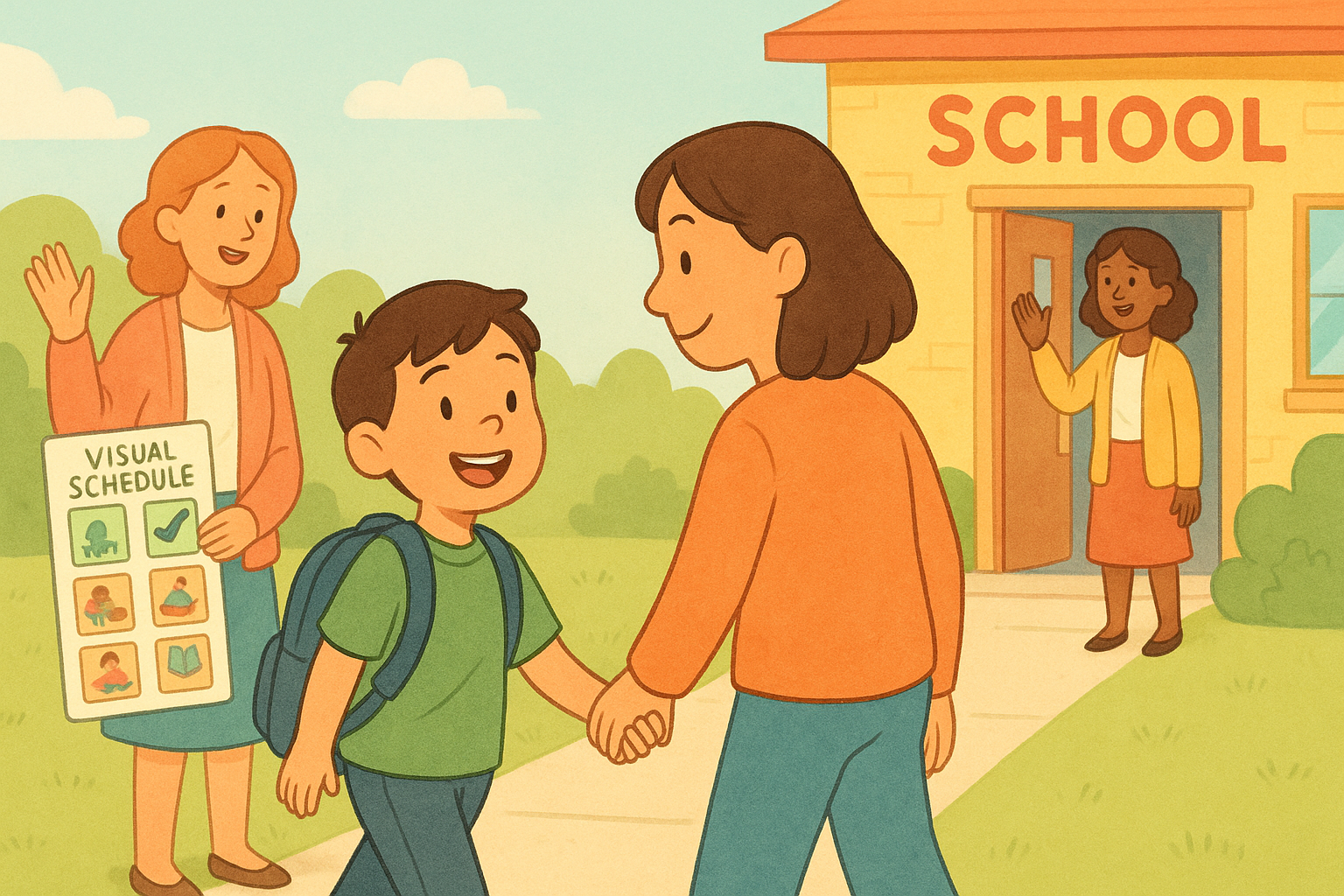Helping Kids With Autism Manage Grief with Applied Behavior Analysis in Cathedral City
Grief is a complex and deeply personal experience that affects individuals of all ages, backgrounds, and abilities.
For children on the autism spectrum, understanding and coping with grief can be incredibly challenging. Riverside, a vibrant community in California, has recognized the importance of providing support to children with autism who are grieving.
One practical approach to helping these children navigate the grieving process is through
Applied Behavior Analysis (ABA) therapy.
Understanding Grief in Children with Autism.
Grief is a natural response to loss, and it can result from various life events, such as the death of a loved one, the loss of a pet, or significant life changes.
Children with autism, like their neurotypical peers, experience grief but may express it differently due to their unique communication and sensory processing challenges.
Understanding how grief manifests in children with autism is essential for providing appropriate support.
Common Responses to Grief in Children with Autism:
Communication Challenges: Children with autism may struggle to express their emotions verbally. Instead, they may communicate their grief through behaviors such as increased stimming, self-isolation, or meltdowns.
Sensory Sensitivities: Grieving children with autism may be more sensitive to sensory stimuli, which can intensify their emotional responses.
Loud noises, bright lights, or certain textures may be overwhelming during periods of grief.
Rigidity and Routine: Many children with autism thrive on routine and predictability.
Grief can disrupt their sense of order and security, increasing anxiety and resistance to change.
Regression: Some children may exhibit deterioration in previously acquired skills or behaviors, such as loss of toileting skills or a return to repetitive behaviors that they had outgrown.
Difficulty Understanding Abstract Concepts: Children with autism may have trouble comprehending abstract concepts like death or the permanence of loss.
They may repeatedly ask questions about the deceased or the event.
The Role of Applied Behavior Analysis (ABA) Therapy
ABA therapy is a well-established and evidence-based approach focusing on understanding and modifying behavior.
While ABA is often associated with skill acquisition and behavior management, it can also be a valuable tool for helping children with autism manage grief.
ABA therapists, or Board Certified Behavior Analysts (BCBAs), can provide specialized support to address the unique challenges children with autism face when experiencing grief.
Critical Aspects of ABA Therapy in Grief Management:
Assessment: ABA therapists conduct comprehensive assessments to understand how grief impacts the child's behavior, emotions, and daily life.
This assessment forms the basis for developing an individualized treatment plan.
Communication Support:
ABA therapy can help children with autism develop effective communication strategies for expressing their grief.
This may include teaching them picture exchange systems, sign language, or augmentative and alternative communication (AAC) devices.
Emotion Recognition: ABA therapists work on helping children with autism recognize and label their emotions. Visual support, social stories, and role-playing can aid in this process.
Sensory Regulation: Strategies for sensory regulation are incorporated into therapy sessions to help children cope with sensory sensitivities that may be exacerbated by grief.
Behavioral Interventions: ABA therapists can design interventions to address challenging behaviors that may emerge during the grieving process.
These interventions are tailored to the child's specific needs and may include self-regulation and emotional coping strategies.
Social Skills Training: Grief often involves navigating social situations, such as funerals or discussions about the deceased.
ABA therapy can teach children with autism appropriate social skills for these contexts.
Transition and Routine Support: ABA therapists assist in managing changes and maintaining routines, helping minimize disruptions that can occur during grief.
Practical Strategies for Grief Management
Families and caregivers in Riverside, as well as those in other communities, can employ practical strategies to support children with autism in managing grief. Here are some practical approaches:
Visual Supports and Social Stories:
Create Visual Timelines: Use visual supports, such as timelines or schedules, to help individuals understand the sequence of events related to the loss.
This provides a concrete and visual representation of the grieving process.
Develop Social Stories: Craft social stories that specifically address the concept of loss, explaining the feelings and changes that may occur.
Social stories can serve as a valuable tool for preparing individuals for what to expect.
Structured Routine and Predictability:
Maintain Consistent Routines: Grief can be particularly challenging for individuals with autism who thrive on routine.
Try to maintain a structured daily routine to provide a sense of predictability and stability during a turbulent time.
Prepare for Changes: If changes to routine are unavoidable, provide advance notice and prepare the individual for what to expect. This helps minimize anxiety associated with unpredictability.
Sensory Considerations:
Create Sensory-Friendly Spaces: Grieving may lead to heightened sensitivities.
Create calm and sensory-friendly spaces where individuals can retreat if they feel overwhelmed.
Offer Sensory Tools: Provide sensory tools, such as stress balls or fidget spinners, as outlets for managing heightened emotions and stress associated with grief.
Facilitate Communication:
Encourage Alternative Communication Methods: Individuals with autism may struggle with verbal expression.
Encourage the use of alternative communication methods, such as writing, drawing, or using assistive communication devices, to help them articulate their feelings.
Provide Social Scripts: Offer scripts or phrases that individuals can use to communicate their emotions, making it easier for them to express their grief to others.
Individualized Coping Strategies:
Identify Personal Coping Mechanisms: Work with individuals to identify their preferred coping mechanisms.
This could include engaging in special interests, engaging in physical activity, or spending time in nature.
Offer a Range of Coping Options: Recognize that individuals with autism may have diverse preferences for coping.
Provide a range of options and encourage the exploration of different strategies.
Therapeutic Support:
Engage in Therapeutic Activities: Consider incorporating therapeutic activities, such as art or music therapy, into the grieving process.
These activities can provide non-verbal outlets for expression and emotional release.
Seek Professional Support: Enlist the help of mental health professionals experienced in working with individuals with autism to provide targeted support and guidance through the grieving process.
Social Inclusion:
Foster Peer Support: Encourage social interactions and facilitate peer support.
Establishing connections with understanding peers can provide a supportive network for individuals with autism during times of grief.
Educate Peers: Provide information to peers and caregivers about autism and grief, fostering a compassionate and inclusive environment.
Conclusion
Grieving is a deeply personal and complex journey, and individuals with autism may face unique challenges in navigating this process.
By implementing practical strategies that align with the specific needs of individuals with autism, we can create a supportive and understanding environment that facilitates healthy grief management.
Through visual supports, sensory considerations, and individualized coping strategies, we can help individuals with autism express and process their grief in ways that resonate with their unique strengths and preferences.
For families seeking specialized support in helping individuals with autism navigate the complexities of grief, Coachella Valley Lighthouse (CV Lighthouse) stands as a beacon of understanding and expertise.
With over 13 years of dedicated service, CV Lighthouse is committed to providing compassionate and individualized care.
Our experienced team, including certified therapists, utilizes evidence-based practices to support individuals with autism through the grieving process.
By integrating visual supports, maintaining consistent routines, and fostering sensory-friendly spaces, we strive to create an environment where each individual can express their emotions and find comfort in their unique coping strategies.
At CV Lighthouse, our mission extends beyond therapy—we are dedicated to empowering individuals with autism and their families to navigate life's challenges with resilience and strength.
For more information on our services, including grief support and Applied Behavior Analysis (ABA) therapy, please
contact Coachella Valley Lighthouse today.
FAQs
How does grief manifest differently in children with autism compared to neurotypical children?
Children with autism may exhibit grief differently due to challenges in communication and social understanding. They may struggle to express their emotions verbally and may show grief through changes in behavior, sensory sensitivities, or disruptions in routine.
What are some common triggers for grief in kids with autism?
Common triggers may include changes in routine, transitions, loss of a loved one or pet, changes in environment, or disruptions to familiar patterns. Sensory stimuli associated with grieving events can also be significant triggers.
How can I explain the concept of death to my child with autism?
Use visual supports, social stories, and concrete language to explain death. Focus on simplicity and provide information based on your child's level of understanding. Be prepared to revisit the topic multiple times as understanding may develop gradually.
Are there specific grief interventions tailored for kids with autism?
Yes, interventions should be tailored to the child's sensory preferences and communication style. Visual supports, structured routines, and therapeutic activities, such as art or music therapy, can be effective. Applied Behavior Analysis (ABA) strategies may also be integrated.
How can I help my child cope with sensory sensitivities during times of grief?
Create sensory-friendly spaces, offer sensory tools, and be mindful of the child's sensory triggers. Providing a calm and predictable environment can help alleviate stress related to sensory sensitivities.
What role do routines play in helping kids with autism manage grief?
Routines provide a sense of predictability and stability, which can be particularly comforting during times of grief. Maintaining consistent routines or providing predictable schedules can help children feel more secure.
Is professional support necessary for a child with autism experiencing grief?
Professional support, such as from mental health professionals experienced in working with autism, can be beneficial. Applied Behavior Analysis (ABA) therapists, in particular, can offer targeted interventions to help children cope with grief in a way that suits their unique needs.
How can I involve my child's peers in supporting them through grief?
Educate peers about autism and grief to foster understanding. Encourage inclusive activities and provide guidance on how peers can offer support, whether through simple gestures, shared activities, or expressions of empathy.
Does Coachella Valley Lighthouse offer support for children with autism experiencing grief?
Yes, Coachella Valley Lighthouse is committed to providing comprehensive support for individuals with autism, including assistance in managing grief. Our experienced team employs evidence-based practices and individualized strategies to help children navigate the complexities of grief.
What makes Coachella Valley Lighthouse a suitable choice for supporting children with autism through grief?
Coachella Valley Lighthouse combines over 13 years of dedicated service with a family-oriented approach, certified therapists, and evidence-based practices. Our commitment to individualized care ensures that each child's unique needs are addressed during the grieving process.











